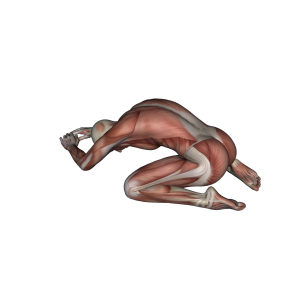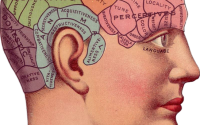Manual Therapy for Lower Back Pain: Evidence-Based and Clinical Outcomes
A research was recently published in Journal of the American Medical Association JAMA, October 2015 issue by researchers from University of Utah. The study titled ” Early Physical Therapy vs Usual Care in Patients With Recent-Onset Low Back Pain, A Randomized Clinical Trial” evaluated whether early physical therapy (spinal manipulation and exercise) is more effective than usual care in improving disability for patients with low back pain (LBP). The study assigned 108 people to receive early physical therapy (four treatment sessions over 3 weeks starting soon after symptoms began), and randomly selected another 112 people to stick with usual care (no physical therapy treatment).
The results showed that among adults with recent-onset LBP, early physical therapy resulted in statistically significant improvement in disability after three months, but the improvement was modest. There wasn’t a significant difference between the groups after one year.
What was reported in the media can have different interpretation:
Reuters Health published “Early physical therapy might help ease lower back pain” ,
Meanwhile, the blog at NYTimes wrote “Physical Therapy May Not Benefit Back Pain”
The Inquisitr reported “New study shows acute lower back pain may not require physical therapy”.
And NPR website reported “Physical Therapy May Help For Back Pain, But Time Works Best”
So is physical therapy is not beneficial for acute low back pain and it is better to wait as time heals?
A Recent Cochrane Review on Massage for low-back pain, has a similar conclusion: “We have very little confidence that massage is an effective treatment for LBP. Acute, sub-acute and chronic LBP had improvements in pain outcomes with massage only in the short-term follow-up. Functional improvement was observed in participants with sub-acute and chronic LBP when compared with inactive controls, but only for the short-term follow-up. There were only minor adverse effects with massage.”
So does that mean massage or manual therapy is no effective for lower back pain? It seems that a short-term relief of pain is considered to be non-significant from a medical point of view. I would contend if there is any therapy that can provide a long-term relief of pain.
While we know that massage cannot fix everything, it can at least provide a short-term relief, which is much needed, following an onset of back pain.
We asked some expert manual therapists on their view on this issue.
John Sharkey MSc:
This paper is not dissimilar to a recent randomized clinical trial published in Spine entitled “Comparison of Spinal Manipulation Methods and Usual Medical Care for Acute and Subacute Low Back Pain” (Schneider et al 2015). Both papers used similar procedures in design and methods. The Schneider paper showed a statistically significant advantage of manual-thrust manipulation at 4 weeks compared to usual medical care.
Based on the past forty years of research we can say with authority that back pain resolution has not statistically improved. In fact, research has demonstrated an increase in the prevalence of chronic back pain. Low back pain is multi-factorial with numerous circular relationships (Richmond 2012). It would be wise to provide treatment that is also multi-factorial. A recent “systematic review of systematic reviews” by Kumar, Beaton and Hughes found some evidence to support the effectiveness of massage therapy for treatment of non-specific low back pain in the short term. Massage therapists combine soft tissue manipulation techniques with other effective therapeutic interventions including positional release, soft tissue release (aka: START, ART, Connective tissue massage) myofascial trigger point therapy, muscle energy techniques and others to great effect. Massage therapists deal with a ludicrous number of variables when treating clients. It is the combined therapeutic effect that leads to the significant results we see every day in clinical practice globally.
Joe Muscolino, DC:
I find the entire premise of this research study to be invalid. I do not see how manual therapy or any therapy, other than pain medication, can be evaluated on how it affects low back pain. We do not treat low back pain. We treat the underlying mechanisms that cause low back pain. And given the many neuro-myo-fascio-skeletal conditions that can cause low back pain, I don’t see how they can all be lumped into one study. I think this study both misses the point of clinical orthopedic manual therapy care and furthers the incorrect belief that if there is not a demonstrable lesion on MRI or X-Ray, that all soft tissue problems can be lumped into “non-specific low back pain.”
Regarding the lack of long term improvement, I will say that I view most manual therapy as a passive means of creating temporary improvement on the part of the client. Once this is achieved, to maintain this improvement, movement therapy such as Pilates, yoga, or fitness training is needed. In other words, we can likely get people well, but we cannot necessarily keep them well. For that, they need strengthening and stretching to create strong musculature and maintain soft tissue flexibility, and regain/maintain proper neural control.
Joanne Avison:
Time, timing and accumulation might also play a role in acquiring and managing (and overcoming) Lower Back Pain. Whatever the cause of lower back pain, be it the insult of poor posture or injury or otherwise, there is known to be a cumulative effect in the tissues; be they compensatory or self-protective, for example. The connective tissue (particularly the Thoracolumbar Fascia and other myofascial aspects that might contribute to Low Back Pain), like all fascial tissues, is now known to respond to its loading history (see Schleip, 2003) over various time-frames. Since the fascia is ubiquitous and invested through every muscle, joint and aspect of the body – including the lower back – it might be misleading to suggest that any therapy can be sufficiently judged after only “early intervention”. Surely a chronic or traumatised pattern would not have sufficient time to respond to treatment? If chronic conditions, by definition, have taken time to accumulate – then perhaps we should consider efficacy of palpation (under any discipline) once it has taken time to accumulate? That is after consistent, repeated treatments that can allow the body to adapt over time, to more optimal patterns. (This is a known purpose and common achievement after such practices as Structural Integration, Neuromuscular Therapy and many others). The response time of specifically training the fascial aspect of the tissues in performance, for example, is 12-24 months, vs. the much faster response time of training in muscular-based programmes. (See article by Schleip in Terra Rosa).
Perhaps “short term” may be the key to lack of significant change, through massage – perhaps it only addresses the muscular aspect in such a short time. Is it plausible that in the long term, the fascial tissues would have the chance to accumulate a more optimal loading history? I would be most interested to see such research based upon 24 months of continued therapeutic intervention. I am not at all sure that the question raised here, upon which the study was based, makes sense of the issue or how the body works; much less justifies suggesting massage doesn’t help, based upon the short term only.
References
Fritz, J. M., Magel, J. S., McFadden, M., Asche, C., Thackeray, A., Meier, W., & Brennan, G. 2015. Early Physical Therapy vs Usual Care in Patients With Recent-Onset Low Back Pain: A Randomized Clinical Trial. JAMA,314(14), 1459-1467.
Furlan, A.D., Giraldo, M., Baskwill, A., Irvin, E. and Imamura, M., 2015. Massage for low‐back pain (Review). Cochrane Database of Systematic Reviews 2015, Issue 9. Art. No.: CD001929. doi: 10.1002/14651858.CD001929.pub3
Schleip, R., 2003. Fascial plasticity–a new neurobiological explanation: Part 1. Journal of Bodywork and Movement Therapies, 7(1): 11-19.
Schneider, M., Haas, M., Glick, R., Stevens, J., Landsittel, D. 2015. Comparison of Spinal Manipulation Methods and Usual Medical Care for Acute and Subacute Low Back Pain A Randomized Clinical Trial. Spine. 40(4): 209-217.
Richmond, J. 2012. Multi-factorial causative model for back pain management; relating causative factors and mechanisms to injury presentations and designing time- and cost effective treatment thereof. Med Hypotheses. Aug; 79 (2):232-40. doi: 10.1016/j.mehy.2012.04.047. Epub May 31.
Kumar, S., Beaton, K., Hughes, T. 2013. The effectiveness of massage therapy for the treatment of nonspecific low back pain: a systematic review of systematic reviews. International Journal of General Medicine. 6: 733–741.

